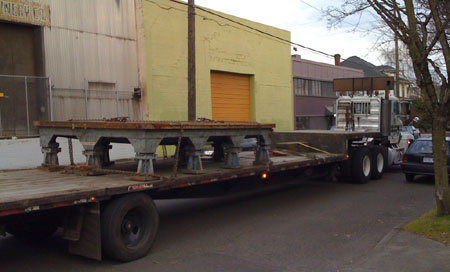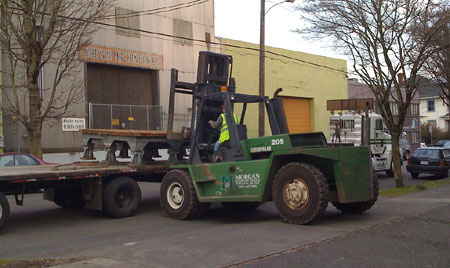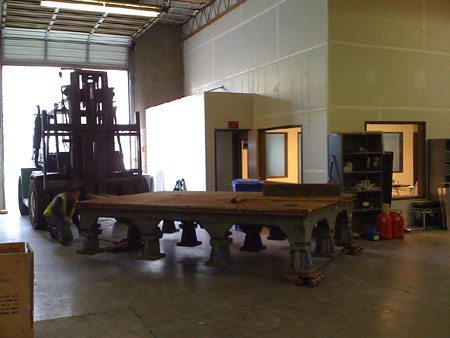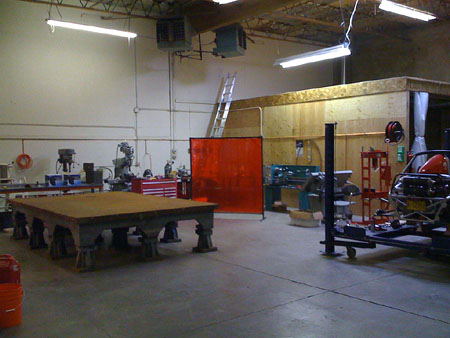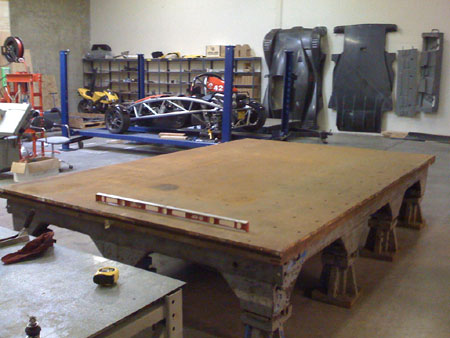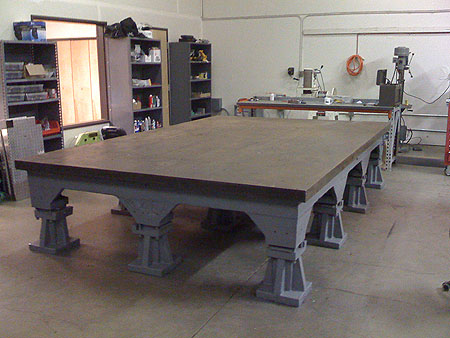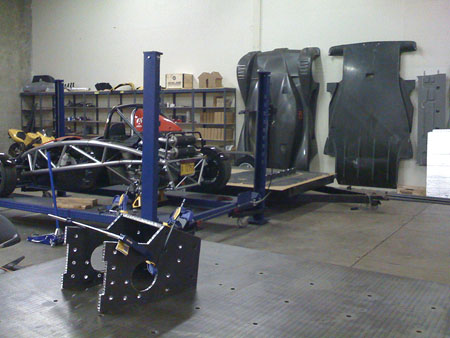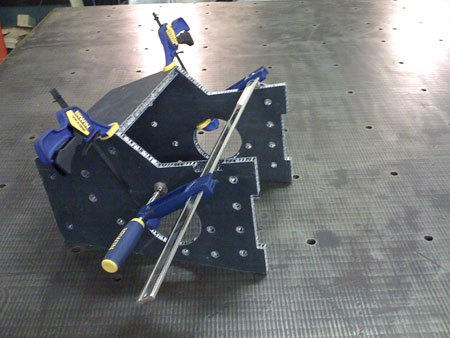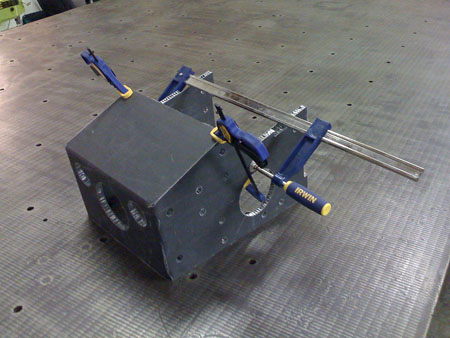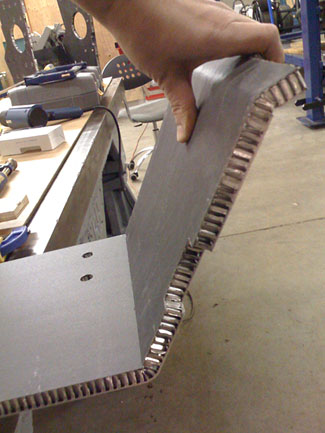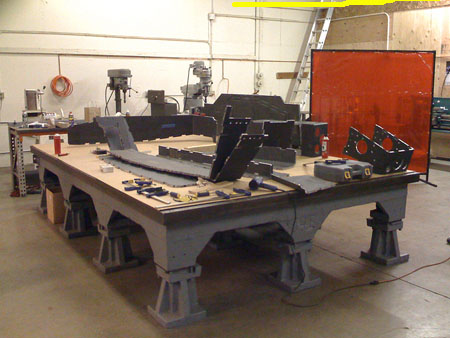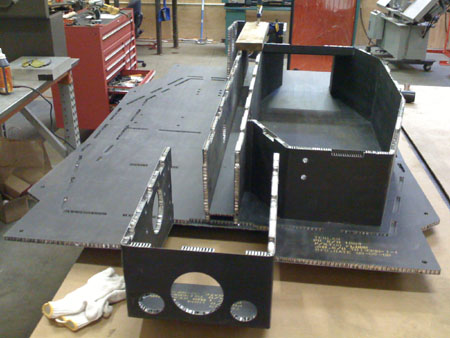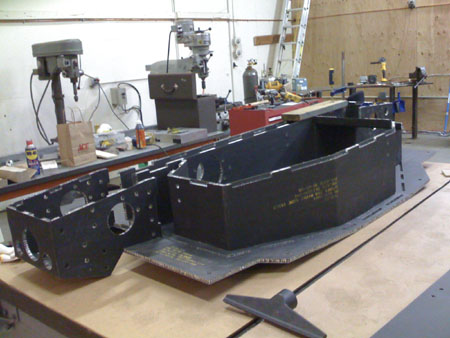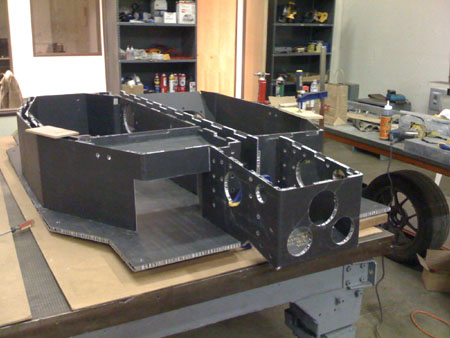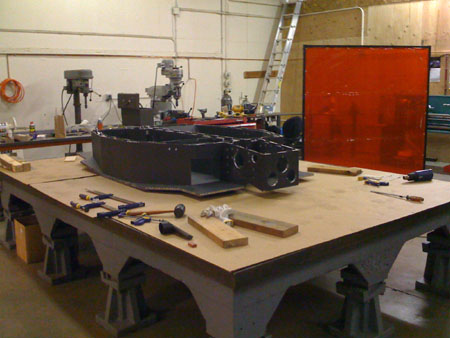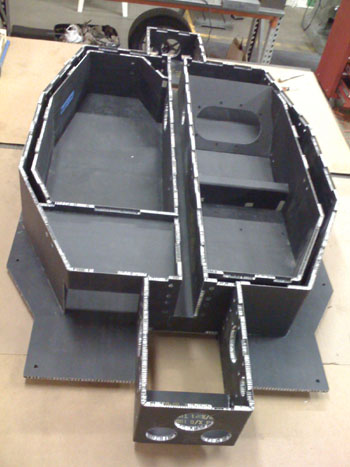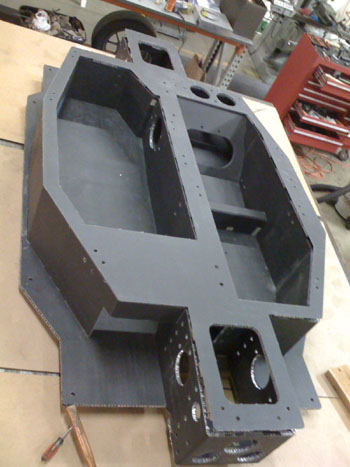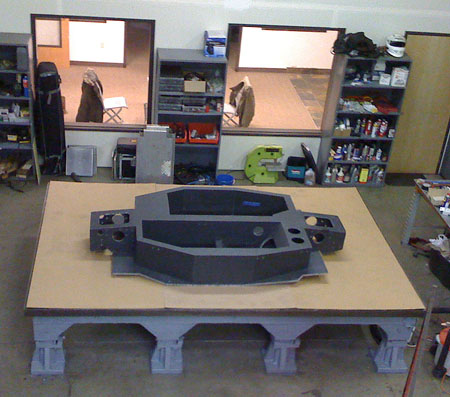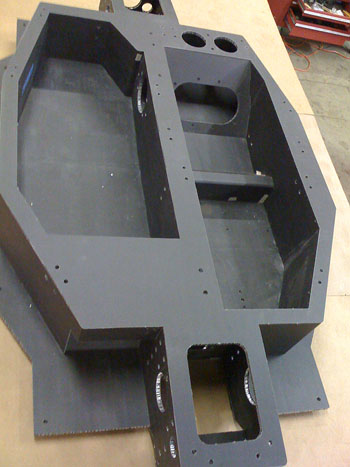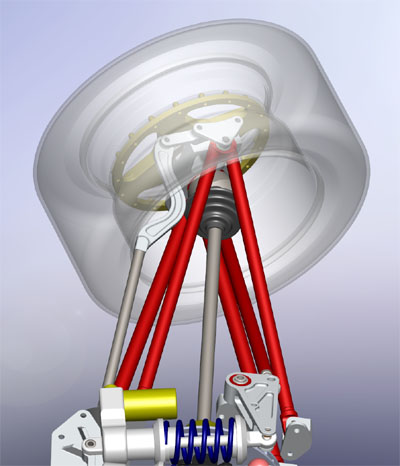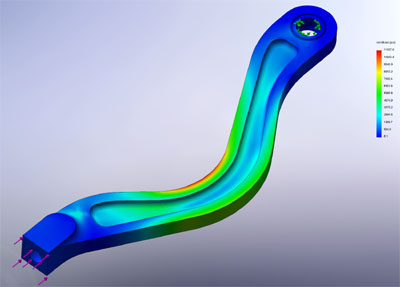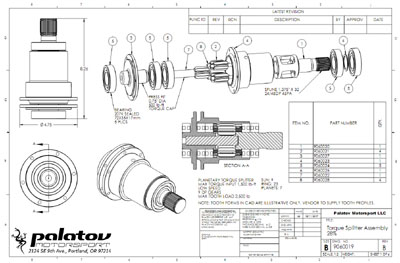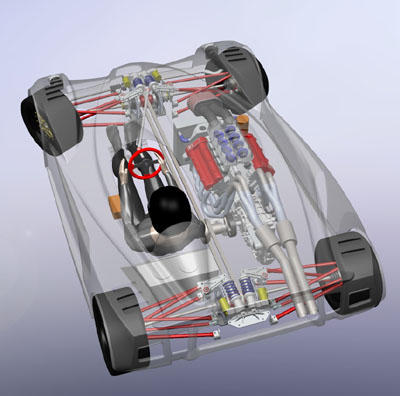|
01/22/09 (updated 1/23) The trigger for the first entry in this log is the delivery of a piece of equipment - an 8'x12' cast iron layout table which will be used for building various fixtures and chassis. It's a flat and very rigid surface with tapped holes on 10" centers. The first thing to be bult on it will be the dp1 composite chassis.
The table is massive, according to the riggers it weighs around 15,000 lbs. It sat outside for a while and therefore needs some cleanup and tweaking, but it was an awesome deal and I think will be very valuable going forward. The shop is now fully functional and every piece of equipment (save for this latest one) has been successfully used. This is fun :) UPDATE: Tristan and I spent the entire day getting the rust and 4 layers of flaking old paint removed from the table. It's not completely done but with a fresh coat of Rustoleum it's looking a whole lot better. Still need to level it and do some further cleanup, but it's usable as-is.
01/28/09 Some progress. Rod Trenne, of Trenne Technologies, came to Portland for a few days to help me put the chassis together. Among a number of other things Rod designed the Mosler MT900 - both styling and chassis. The dp1 chassis uses a similar architecture and construction method to that car, with a few twists of my own of course.
At the moment we're just bending the panels and making sure they all fit. Once the fit is verified the hardpoints will be installed, adhesive will be applied and then heat-cured in an oven that will get put together later. It's a steep learning curve. 01/29/09 The chassis is pretty much test-fit together. A couple more clearances to fine-tune but basically this is what it's looking like...
I went with double-thickness skins in the interest of safety and it was a conscious decision to accept the 35 lbs weight penalty. As a result the chassis as it sits weighs 98 lbs, it'll be a bit more with the glue and hardpoints installed. Definitely learning a few things in this process, they'll be reflected in subsequent designs. This will work though. Just moving the thing around it's very stiff and reasonably light, even without glue. When the test-fit is complete it'll all come apart, we'll build an oven, bond in the aluminum hardpoints, reinforce all the seams and then bake the whole thing. Edge closeouts will take some work. I've got a couple ideas to try there. Having the table to work on is awesome. You can clamp to it, walk on it, measure on it, lay parts out, etc., all at perfect working height. The three big sheets of cardboard help a lot because overnight the thing gets COLD and it doesn't heat up much during the day. 01/30/09 The test-fit is now complete. Took a bit of tweaking to get the top 'lid' on all the way but the chassis now looks exactly like CAD says it should. CNC is great and would be even more so if a worn-out cutter weren't used but that's another story and nothing that couldn't be fixed by old-fashioned hand labor. Sigh...
At the same time the parts are being ordered and made we're creating a part numbering system, inventory control, bills of materials, approved vendor list and the like. No shortage of work in other words. Speaking of work and progress, there's some movement on the Palatov website - www.palatov.com. It's still under construction of course but it's starting to get filled out a bit. Tristan is doing the bulk of the work on that. 02/19/09 Much work has taken place since the last update. A lot of detail engineering, simulations, getting parts quoted and yes, ordered. This is a fun process when things are actually taking concrete shape. Sometimes it's a bit frustrating of course, getting it all to fit, and everything is connected to everything else. Steering mechanism is a good example. To make room for the drivetrain and allow a more direct connection between the wheel and the rack I moved the rack ahead of the axle and upwards, in line with upper wishbone pivots. Eliminating bumpsteer requires moving the steering arm up in the wheel, which gets it close to the rim. And the tie rod interferes with the wheel when it's turned. So, a lot of close clearances and interesting looking solutions... But it all works. At least in the computer ;)
The shape looks a little odd so this is where simulation comes in - with a 300 lb load on the tie rod (the equivalent of 4g cornering) the part still has a safety factor of more than 3. Deflection is only 0.001". Weight and cost are only a litte more than a premium rodend. Another part of getting everything ordered is generating drawings. Lots of them. I'm just glad I don't have to do this by hand.
Over the next couple months all these parts will be showing up at the shop, getting put in inventory and then assembled into a car. A couple cars, actually, since dp1 and dp4 are being built more or less in parallel. And of course the others, along with additional projects, are getting worked on too. In the meantime the adhesive for the chassis has arrived packed in dry ice, the curing oven is nearing completion, the hardpoints and fittings are just about done so very soon the chassis will be going together for real. As a quick note, while working with the various linkages I turned off the chassis in CAD and I thnk the resulting picture is quite illustrative of what this car is about - the driver, the engine, and just enough to let them work together. It'll be fun.
|
